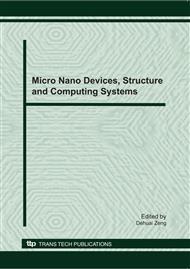p.222
p.228
p.232
p.236
p.242
p.248
p.252
p.258
p.264
Study on the Pretreatment of the Preparation of Bamboo Fiber and its Bleaching Technology
Abstract:
Bamboo fiber is a new natural green environmental protection fiber material with good characteristics of good permeability, unique elasticity, transient absorption, antibacterial, odor resistance and stronger vertical and horizontal intensity. Bamboo pretreatment can improve the biological degumming efficiency of bamboo lignin, reduce microbial degumming time, and reduce production costs. The results show that the removal efficiency of pectin, hemicelluloses and lignin are better after the pretreatment of bamboo mercerization. Through orthogonal experiments, it can be got the optimum combination of bamboo fiber alkali cooking process is A2-B2-C2-D1, namely: concentration of NaOH is 6.0g / L, its time is 60min, temperature 100 °C, and bath ratio 1:20. In these four factors, the greatest impact on the removal of lignin is temperature, followed by is degumming time, then the concentration of alkali, and the bath ratio is the smallest. The best conditions of bamboo fiber bleaching is: hydrogen peroxide 25 ~ 35g / L, temperature 30 ~ 40 °C, treatment 45 ~ 60min. The process of the pretreatment of bamboo is: clip → Roll → high-pressure steaming → roll→ immersion separation → alkali leaching treatment→ scouring → rolling combing →washing→ drying →crude fiber → bleaching.
Info:
Periodical:
Pages:
242-247
Citation:
Online since:
December 2010
Authors:
Keywords:
Price:
Сopyright:
© 2011 Trans Tech Publications Ltd. All Rights Reserved
Share:
Citation:


